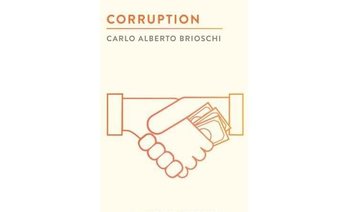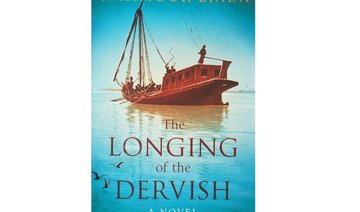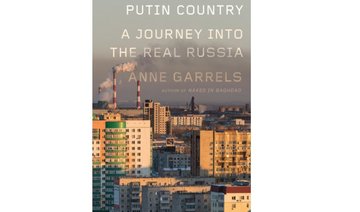When India’s economy slowed sharply in the first quarter of 2017, many believed that Narendra Modi’s currency ban of the previous year was one of the main causes. Saurabh Mukherjea, chief executive officer at Ambit Capital, summarized how the market reacted by saying: “Demonetization was the economic equivalent of a heart attack… The economy had a mild headache and we are now over it.”
India remains the fastest-growing major economy in the world despite the shock of demonetization, the strengthening of oil prices and a range of uncertainties at home and abroad.
Joining an extensive list of books on India, “Turn of the Tortoise: The Challenge and Promise of India’s Future” gives us a commanding view of the intricacies of the Indian economy. The author, T. N. Ninan, is the chairman of Business Standard, India’s second-largest business daily, and one of India’s most respected economic editors.
Ninan tackles the issue of India’s size and sets the record straight. India’s size only tells one side of the story. Even in the 1870s, when India was bigger than Britain, it suffered from a conspicuous absence of development and lacked industrial and technological capabilities.
Today, having gained its independence, India wants a place in the sun. During the 2008 financial crisis, India was the 12th largest economy in the world and it jumped up to seventh place in 2015, overtaking Spain, Canada and Italy.
India has maintained an annual GDP growth of seven percent or more for 25 years and this is beginning to pay off. Just like “The Hare and the Tortoise,” the famous fable by Jean de La Fontaine, India seems to be winning the race in slow and steady fashion. India, which was seen as a tortoise because of its slower growth, is catching up fast with hares such as China, Vietnam and Malaysia. These Asian giants have seen their economies weaken as they reached a certain level of production and prosperity. Within the next five years, India is poised to be the third-largest contributor to world growth after China and the US.
The author focuses on the poor standards of governance that make India a difficult place to do business. Ninan quotes a chief executive of one of America’s largest companies whose comment helps us understand what works and what does not in India. He noticed that his company had succeeded every time it bet on the Indian people, less so but with good success when it bet on the Indian market and least of all when it bet on Indian policymaking and policymakers.
India’s economic success is largely due to the presence of educated manpower, which has provided quality engineers, lawyers, accountants, managers and call center staff for international companies. However, none of this could have been possible without the input of exceptional businessmen who are listed on the Fortune 500 list. They have changed the game and have taken Indian entrepreneurship to the next level.
Indian policymakers have tried hard to revive the country’s manufacturing sector. Modi, in particular, showed strong resolve when he created the “Made in India” initiative to achieve that goal. India, however, is still seen as a difficult country to set up a business in and the government is planning to reduce paperwork and digitalize the whole process in a bid to counter that. However, even if such measures are implemented, India is still home to a poor infrastructure, its workers are not as productive as the Chinese and dealing with the authorities is seen as a trying experience, according to the book.
This book’s main argument is that India should not copy China and compete solely on the strength of lower wages. “Rather than studying China, which has led to failed copycat experiments like special economic zones, it should be more fruitful to study India (and) how to change its operating environment, then look at what kind of manufacturing has worked in this country and what has not. Following from that, a strategy can (be planned) to back the horses that can run, not the donkeys that can’t,” Ninan wrote.
Wages and workers
Many studies highlight the notion that Indian workers are not as productive as their counterparts in China or Korea. Ninan gives us the example of Dilip Kapur, the founder of a successful leather products company whose workers could not produce more than nine handbags per day versus 12 per day in a Chinese factory.
Successful manufacturing plants should not only be based on cost and productivity as they also require other factors, such as the availability of raw materials or a large home market.
India, according to Ninan, must not focus solely on intensive manufacturing. It has an abundant, qualified and well-educated labor force that can work in very specialized sectors such as spatial research, software services and in the pharmaceutical industry where it has been remarkably successful in producing generic drugs. For all these reasons, an increasing number of international companies are establishing key research and development centers in India.
The author also reminds readers of the untapped potential wealth of Indian agriculture. Farming productivity can be substantially increased through crop diversification into higher-value products such as fruit and vegetables and making use of better technology and farming practices. “The truth is that India can hugely increase the productivity levels on its farms, continue to comfortably feed itself, become an export powerhouse if it wishes to and, in the process, raise both employment and income levels substantially in the rural areas while also freeing land for non-agricultural use,” Ninan wrote.
Some parts of rural India are changing fast. Land prices are going up and a number of farmers have become rich by selling their land to real estate developers. However, farming remains difficult in other parts of the country and despite a rise in agricultural growth, the yield per hectare of many crops is only half of what it is in other countries.
While some laborers increase the ranks of a destitute rural proletariat, others decide to move into cities where they live in slums. Life in slums is not what it used to be and the way of life has changed drastically. Half of the homes in slums have tap water while access to electricity and cooking gas is near universal, according to the book.
Although change is needed, India is firmly on course to be the world’s second-largest economy, behind China, by 2040. One has to keep in mind that half of the Indian population is under the age of 28, providing a fast-expanding, educated and English-speaking workforce. If the economy continues to grow at an annual rate of seven percent over the next decade, it is expected that by 2025 up to 700 million Indians will be part of the middle class.
Despite internal tensions and conflicts, Ninan confidently concludes that “the reassuring facts in a broadly hopeful scenario are that the directions are overwhelmingly positive and that the system, as a whole, has a bedrock of stability that is not affected by the surface turmoil.”
Book Review: Does slow and steady win the race in India?
Book Review: Does slow and steady win the race in India?

What We Are Reading Today: ‘Digital Cultural Shock’ by Katherina Reinecke

Robots that encroach on your personal space, baffling emojis, a chatbot that gives you an answer that seems terribly rude—does any of this sound familiar?
An encounter with new technology can teach us to embrace the unfamiliar, but a mismatch between design and user can create misunderstanding and loss of trust, and can even become a tool of digital imperialism.
In “Digital Culture Shock,” computer scientist Katharina Reinecke travels through countries and cultures around the world to show the many fascinating ways that technology design and use can differ.
What We Are Reading Today: ‘The Essence of Software’

- “The Essence of Software” introduces a theory of software design that gives new answers to old questions
Author: DANIEL JACKSON
As our dependence on technology increases, the design of software matters more than ever before. Why then is so much software flawed? Why hasn’t there been a systematic and scalable way to create software that is easy to use, robust, and secure? Examining these issues in depth, “The Essence of Software” introduces a theory of software design that gives new answers to old questions.
Daniel Jackson explains that a software system should be viewed as a collection of interacting concepts, breaking the functionality into manageable parts and providing a new framework for thinking about design.
What We Are Reading Today: ‘Flows in Networks’

Authors: Lester Randolf Ford Jr. & D. R. Fulkerson
In this classic book, first published in 1962, L. R. Ford, Jr., and D. R. Fulkerson set the foundation for the study of network flow problems. The models and algorithms introduced in “Flows in Networks” are used widely today in the fields of transportation systems, manufacturing, inventory planning, image processing, and internet traffic.
The techniques presented by Ford and Fulkerson spurred the development of powerful computational tools for solving and analyzing network flow models, and also furthered the understanding of linear programming.
What We Are Reading Today: ‘Planetary Climates’ by Andrew Ingersoll

This concise, sophisticated introduction to planetary climates explains the global physical and chemical processes that determine climate on any planet or major planetary satellite— from Mercury to Neptune and even large moons such as Saturn’s Titan.
Although the climates of other worlds are extremely diverse, the chemical and physical processes that shape their dynamics are the same.
As this book makes clear, the better we can understand how various planetary climates formed and evolved, the better we can understand Earth’s climate history and future.
What We Are Reading Today: ‘Dragonflies of North America’

- “Dragonflies of North America” is the ultimate guide to these extraordinary insects
Author: ED LAM
Dragonflies are large and beautiful insects, diverse in color and pattern. This premier field guide provides all the information you need to identify every male and female dragonfly found in North America, whether in the field, in the hand, or under the microscope.
The extensive illustrations are the heart of the book. Close-up color portraits of each species, often several times life size, show the best possible specimens for close examination.
“Dragonflies of North America” is the ultimate guide to these extraordinary insects.


















